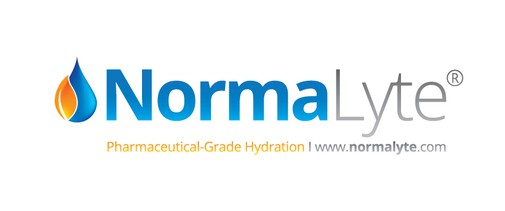What is POTS?
Postural orthostatic tachycardia syndrome (POTS) is a common autonomic nervous system disorder characterized by an excessively fast heart rate and symptoms of lightheadedness upon standing.
Diagnostic Criteria
The current diagnostic criteria for POTS is a heart rate increase of 30 beats per minute (bpm) or more, or over 120 bpm, within the first 10 minutes of standing, in the absence of orthostatic hypotension.1,2,3,4 In children and adolescents, a standard of a 40 bpm or more increase has been adopted.4,5 POTS is often diagnosed by a Tilt Table Test, but if such testing is not available, POTS can be diagnosed with bedside measurements of heart rate and blood pressure taken in the supine (laying down) and standing up position at 2, 5 and 10 minute intervals. This is called the Active Stand Test. Unfortunately, the Active Stand Test may miss some cases of POTS, so while it is appropriate to use to help diagnose POTS, caution should be used in ruling out POTS with an Active Stand Test when a patient has symptoms consistent with POTS. Doctors may perform more detailed tests to evaluate the autonomic nervous system in POTS patients, such as Quantitative Sudomotor Axon Reflex Test (QSART, sometimes called Q-Sweat), Thermoregulatory Sweat Test (TST), skin biopsies looking at the small fiber nerves, gastric motility studies and more.
Signs and Symptoms
While the diagnostic criteria focus on the abnormal heart rate increase upon standing, POTS usually presents with symptoms much more complex than a simple increase in heart rate. It is fairly common for POTS patients to have a drop in blood pressure upon standing, but some POTS patients have no change or even an increase in blood pressure upon standing.1 POTS patients often have hypovolemia (low blood volume) and high levels of plasma norepinephrine while standing, reflecting increased sympathetic nervous system activation.3 Approximately 50% of POTS patients have a small fiber neuropathy that impacts their sudomotor nerves. Many POTS patients also experience fatigue, headaches, lightheadedness, heart palpitations, exercise intolerance, nausea, diminished concentration, tremulousness (shaking), syncope (fainting), coldness or pain in the extremities, chest pain and shortness of breath.1,3,4 Patients can develop a reddish purple color in the legs upon standing, believed to be caused by blood pooling or poor circulation. The color change subsides upon returning to a reclined position.
Quality-of-Life and Disability
Some patients have fairly mild symptoms and can continue with normal work, school, social and recreational activities. For others, symptoms may be so severe that normal life activities, such as bathing, housework, eating, sitting upright, walking or standing can be significantly limited.1,3 Physicians with expertise in treating POTS have compared the functional impairment seen in POTS patients to the impairment seen in chronic obstructive pulmonary disease (COPD) or congestive heart failure.1 Approximately 25% of POTS patients are disabled and unable to work.1 Researchers found that quality-of-life in POTS patients is comparable to patients on dialysis for kidney failure.21, 22
Epidemiology
Prior to the COVID-19 pandemic, POTS was estimated to impact 1-3 million Americans, and millions of other people around the world. Experts estimate that the POTS population has doubled since the start of the COVID-19 pandemic.1
History of POTS
The term "POTS" was coined in 1993 by a team of researchers from Mayo Clinic, led by neurologist Dr. Philip Low.8 However, POTS is not a new illness; it has been known by other names throughout history, such as DaCosta's Syndrome, Soldier's Heart, Mitral Valve Prolapse Syndrome, Neurocirculatory Asthenia, Chronic Orthostatic Intolerance, Orthostatic Tachycardia and Postural Tachycardia Syndrome.3 In the past, it was mistakenly believed to be caused by anxiety. However, modern researchers have determined that POTS is not caused by anxiety.2,6,7 It is caused by a malfunction of the patient's autonomic nervous system. Thankfully, in the last 30 years, researchers have gained much more insight into imbalances of the autonomic nervous system.1
POTS Classifications
POTS researchers have classified POTS in various ways. Dr. Blair Grubb has described POTS as "primary" or "secondary." "Primary" refers to POTS with no other identifiable medical condition (also known as "idiopathic" POTS). "Secondary" refers to POTS with the presence of another medical condition known to cause or contribute towards POTS symptoms.1 Dr. Julian Stewart has described "high flow" and "low flow" POTS, based upon the flow of blood in the patients lower limbs.9
Other researchers have described POTS based on some of its more prominent characteristics: hypovolemic POTS, which is associated with low blood volume; partial dysautonomic or neuropathic POTS which is associated with a partial autonomic neuropathy; and hyperandrenergic POTS which is associated with elevated levels of norepinephrine.1,3,4 These are not distinct medical conditions and many POTS patients have two or three of the different characteristics present. For example, one patient can have neuropathy, low blood volume and elevated norepineprhine.
Who Develops POTS?
POTS can strike any age, gender or race, but it is most often seen in women of child bearing age (between the ages of 15 and 50).2 Men and boys can develop it as well, but approximately 80% of patients are female.2
Is POTS Caused by Anxiety?
While some of the physical symptoms of POTS overlap with the symptoms of anxiety, such as tachycardia and palpitations, POTS is not caused by anxiety. POTS patients are often misdiagnosed as having anxiety or panic disorder, but their symptoms are real and can severely limit a person's ability to function.1,3 Research has shown that POTS patients are similarly or even less likely to suffer from anxiety or panic disorder than the general public.3,5,6,7 Research surveys that evaluate mental health show similar results between POTS patients and national norms.20
What Causes POTS?
POTS is a heterogeneous (meaning it has many causes) group of disorders with similar clinical manifestations.1,4 POTS itself is not a disease; it is simply a cluster of symptoms that are frequently seen together. This is why the 'S' in POTS stands for "Syndrome." Since POTS is not a disease, it is fair to say that POTS is caused by something else. However, figuring out what is causing the symptoms of POTS in each patient can be very difficult, and in many cases, patients and their doctors will not be able to determine the precise underlying cause. When doctors cannot pinpoint the underlying cause of a patient's POTS, it may be called Primary or Idiopathic POTS.1 Idiopathic simply means "of an unknown origin."
While researchers are still working to identify the root causes and pathology of POTS, there are several underlying diseases and conditions that are known to cause or be associated with POTS or POTS like symptoms in some patients. This is a partial list:
-Amyloidosis;1
-Autoimmune Diseases such as Autoimmune Autonomic Ganglionopathy, Sjogren's Syndrome, Lupus, Sarcoidosis, Antiphospholipid Syndrome;1,3, 22
-Chiari Malformation19
-Deconditioning;4
-Delta Storage Pool Deficiency13
-Diabetes and pre-diabetes
-Ehlers Danlos Syndrome - a collagen protein disorder than can lead to joint hypermobility and "stretchy" veins;3,12
-Genetic Disorders/Abnormalities;3
-Infections such as Mononucleosis, Epstein Barr Virus, Lyme Disease, extra-pulmonary Mycoplasma pneumonia and Hepatitis C;1,2,3,4,10,11
-Multiple Sclerosis;14
-Mitochondrial Diseases;15
-Mast Cell Activation Disorders;3
-Paraneoplastic Syndrome - rare small tumors of the lung, ovary, breast and pancreas that produce antibodies;1
-Toxicity from alcoholism, chemotherapy and heavy metal poisoning.1
-Traumas, pregnancy or surgery;1,2,3
-Vaccinations;18
-Vitamin Deficiencies/Anemia;16,17
Treatment
Each patient is different, thus consulting with a physician who has experience in treating autonomic disorders is important. The most common treatments for POTS include increasing fluid intake to 2-3 liters per day; increasing salt consumption to 8,000 mg to 10,000 mg per day; wearing compression stockings; raising the head of the bed (to conserve blood volume); reclined exercises such as rowing, recumbent bicycling and swimming; a healthy diet; avoiding substances and situations that worsen orthostatic symptoms; and finally, the addition of medications meant to improve symptoms.1,3 Many different medications are used to treat POTS, such as Fludrocortisone, Beta Blockers, Midodrine, Clonidine, Pyridostigmine, Benzodiazepines, SSRIs, SNRIs, Erythropoietin and Octreotide.1,3 If an underlying cause of the POTS symptoms can be identified, treating the underlying cause is very important as well.
Prognosis
Currently, there is no cure for POTS, however researchers believe that some patients will see an improvement in symptoms over time. Detailed long term follow up studies on the course of POTS are sparse, but Dysautonomia International is working with researchers to begin to collect long term follow up data. With proper lifestyle adjustments, exercise, diet and medical treatments, many patients see an improvement in their quality of life.1 If an underlying cause can be identified, and if that cause is treatable, the POTS symptoms may subside. While the prognosis is good for most patients, researchers have noted that some patients will not improve and may actually worsen over time.1
The longest follow-up study done to date comes from Mayo Clinic.20 Mayo Clinic did a survey of their pediatric POTS patients seen between 2003 and 2010. Of those who responded to the survey, 18.2% reported a complete resolution of their POTS symptoms, while 52.8% reported persistent but improved symptoms. Male patients were twice as likely to report recovery. The average survey respondent had been diagnosed for about 5 years. Both patients who fully recovered and those who did not had mental health scores similar to the national norm.
Print out the 10 Facts About POTS flyer and share it with your community to help raise awareness!
Sources
1. Postural Tachycardia Syndrome. Blair P. Grubb, Circulation. 2008; 117: 2814-2817.
2. National Institute of Health, Neurological Institute of Neurological Disorders and Stroke, Postural Tachycardia Syndrome Information Page.
3. The Postural Tachycardia Syndrome (POTS): Pathophysiology, Diagnosis & Management. Satish R Raj, MD MSCI, Indian Pacing Electrophysiol J. 2006 April-Jun; 6(2): 84-99.
4. Consensus statement on the definition of orthostatic hypotension, neurally mediated syncope and the postural tachycardia syndrome. Autonomic Neuroscience: Basic and Clinical 161 (2011) 46-48.
5. Postural tachycardia in children and adolescents: what is abnormal? Singer W, Sletten DM, Opfer-Gehrking TL, Brands CK, Fischer PR, Low PA, J Pediatr. 2012 Feb;160(2):222-6. Epub 2011 Oct 11.
6. Excessive heart rate response to orthostatic stress in postural tachycardia syndrome is not caused by anxiety; Masuki S, Eisenach JH, Johnson C et al. Journal of Applied Physiology 2006; 102: 1134-42.
7. Experimental induction of panic-like symptoms in patients with postural tachycardia syndrome; Khurana RK, Clinical Autonomic Research 2006; 16: 371-7.
8. Idiopathic postural orthostatic tachycardia syndrome: an attenuated form of acute pandysautonomia. Schondorf R, Low PA; Neurology 1993 Jan;43(1):132-7.
9. Increased plasma angiotensin II in postural tachycardia syndrome (POTS) is related to reduced blood flow and blood volume. Stewart JM, Glover JL, Medow MS. Clin Sci (Lond). 2006 Feb;110(2):255-63.
10. Postural orthostatic tachycardia syndrome following Lyme disease. Kanjwal K, Karabin B, Kanjwal Y, Grubb BP; Cardiol J. 2011;18(1):63-6.
11. Postural Orthostatic Tachycardia Syndrome Associated With Mycoplasma pneumoniae. Kasmani, Rahil MD, MRCP; Elkambergy, Hossam MD; Okoli, Kelechi MD, MRCP; Infectious Diseases in Clinical Practice: September 2009 - Volume 17 - Issue 5 - pp 342-343.
12. Dysautonomia in the joint hypermobility syndrome. Gazit Y, Nahir AM, Grahame R, Jacob G. Am J Med. 2003 Jul;115(1):33-40.
13. Platelet Delta Granule and Serotonin Concentrations Are Decreased in Patients with Postural Orthostatic Tachycardia Syndrome Presented at the 51st Annual Meeting of the American Society of Hematology, December 6, 2009.
14. Autonomic dysfunction presenting as postural orthostatic tachycardia syndrome in patients with multiple sclerosis. Kanjwal K, Karabin B, Kanjwal Y, Grubb BP. Int J Med Sci, 2010 Mar 11;7:62-7.
15. Autonomic dysfunction presenting as orthostatic intolerance in patients suffering from mitochondrial cytopathy. Kanjwal K, Karabin B, Kanjwal Y, Grubb BP. Clin Cardiol. 2010 Oct;33(10):626-9.
16. Iron insufficiency and hypovitaminosis D in adolescents with chronic fatigue and orthostatic intolerance. Antiel RM, Caudill JS, Burkhardt BE, Brands CK, Fischer PR. South Med J. 2011 Aug;104(8):609-11.
17. Autonomic function tests in cases of chronic severe anaemia. Nand N, Mohan R, Khosla SN, Kumar P. J Assoc Physicians India. 1989 Aug;37(8):508-10.
18. Postural tachycardia syndrome after vaccination with Gardasil. Blitshteyn, Svetlana. European Journal of Neurology; 2010; Letter to the Editor
19. Orthostatic intolerance and syncope associated with Chiari type I malformation.
Prilipko, O. et al. J Neurol Neurosurg Psychiatry 2005;76:1034-1036.
20. Long-term outcomes of adolescent-onset postural orthostatic tachycardia syndrome. S.J. Kizilbash, S.P. Ahrens, R. Bhatia, J.M. Killian, S. A. Kimmes, E.E. Knoebel, P. Muppa, A.L. Weaver, P.R. Fischer. Clin. Auton. Res. October 2013. Abstract presented at the 24th International Symposium on the Autonomic Nervous System.
21. Estimation of sleep disturbances using wrist actigraphy in patients with postural tachycardia syndrome. Bagai K1, Wakwe CI, Malow B, Black BK, Biaggioni I, Paranjape SY, Orozco C, Raj SR. Auton Neurosci. Oct 2013; 177(2): 260?265.
22. POTS - A World Tour, lecture presented by Dr. Satish Raj during the 2013 Dysautonomia International Conference.
23. Postural tachycardia syndrome (POTS) and other autonomic disorders in antiphospholipid (Hughes) syndrome (APS). Schofield J1, Blitshteyn S, Shoenfeld Y, Hughes G. Lupus. 2014 Feb 25.
| | |




